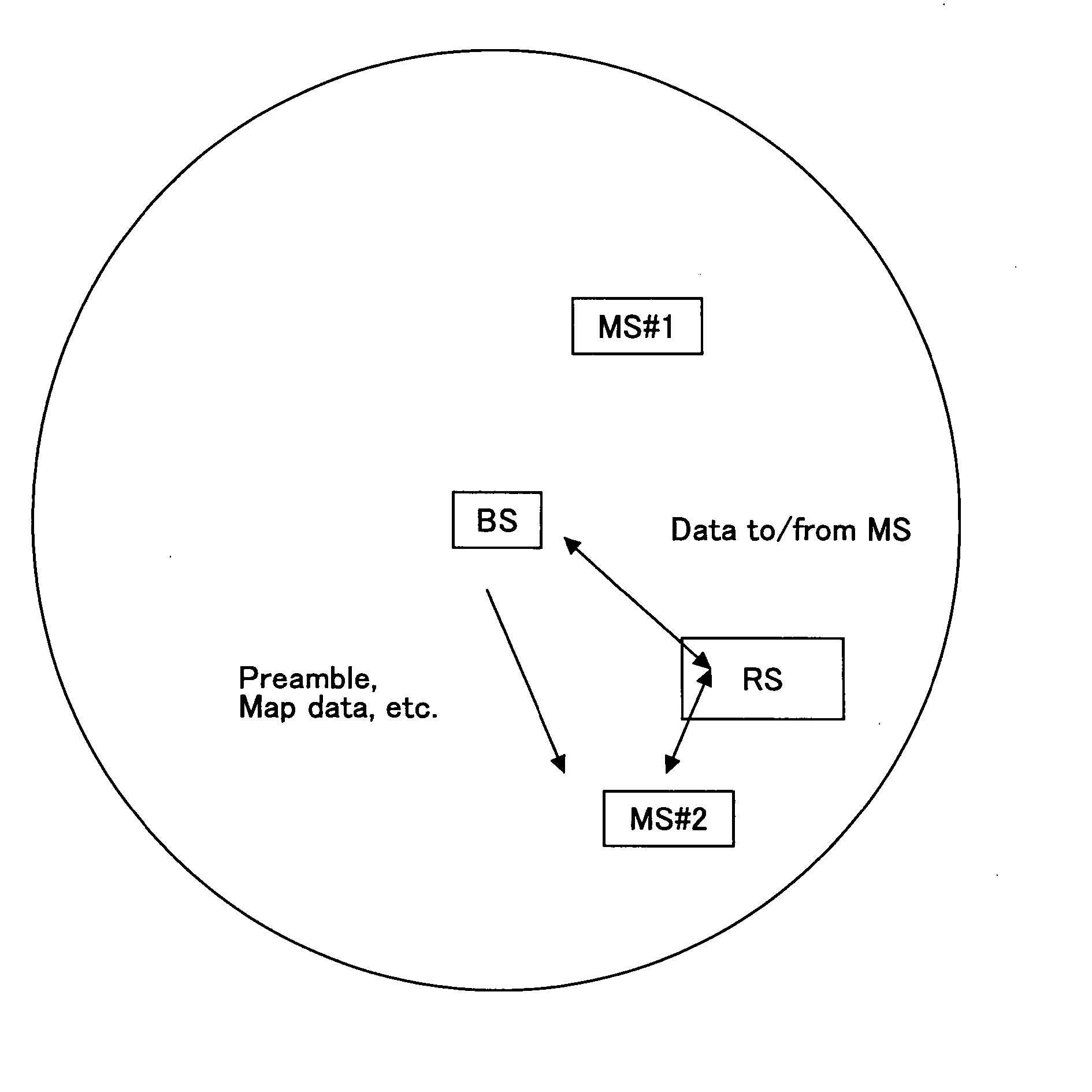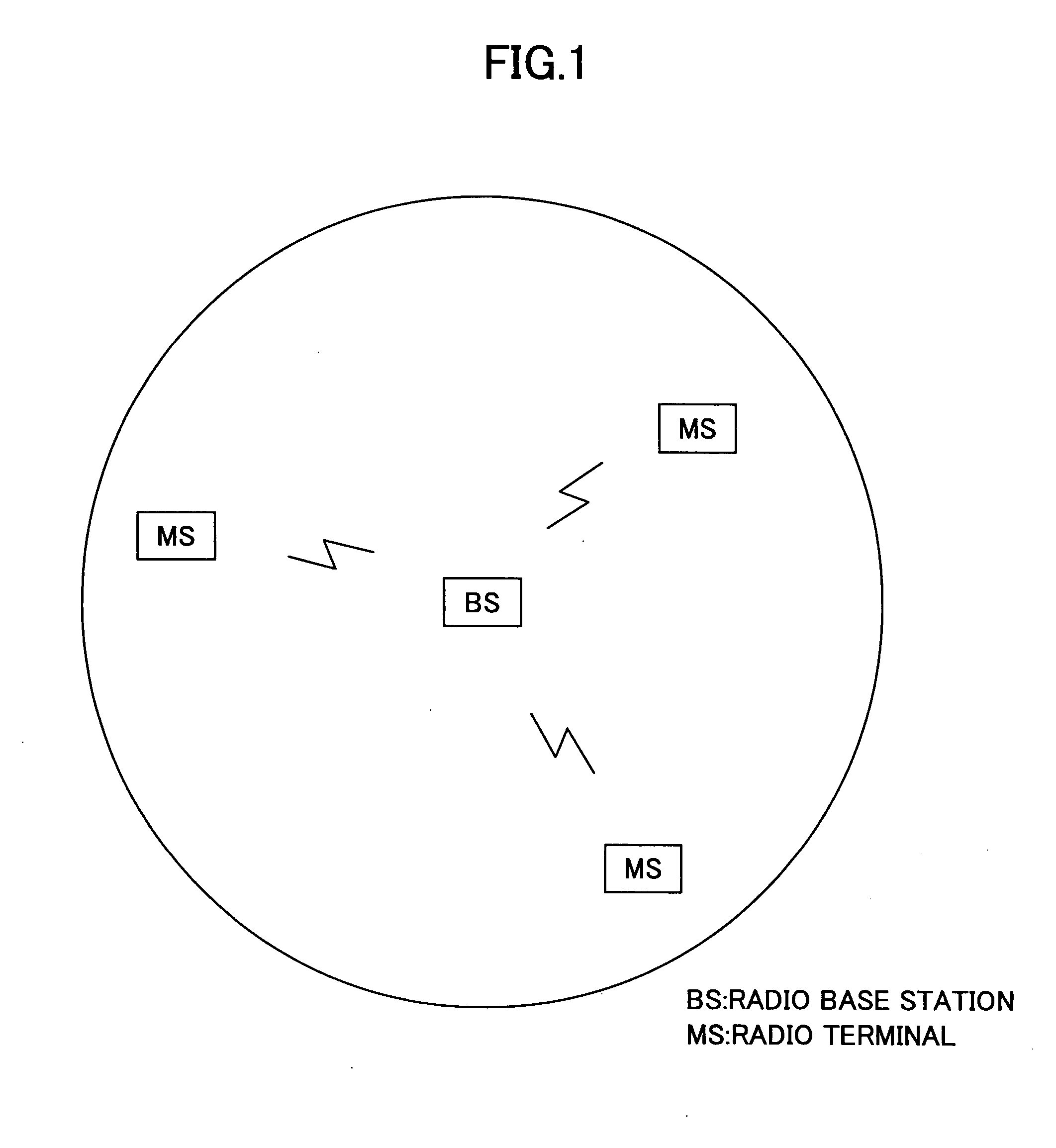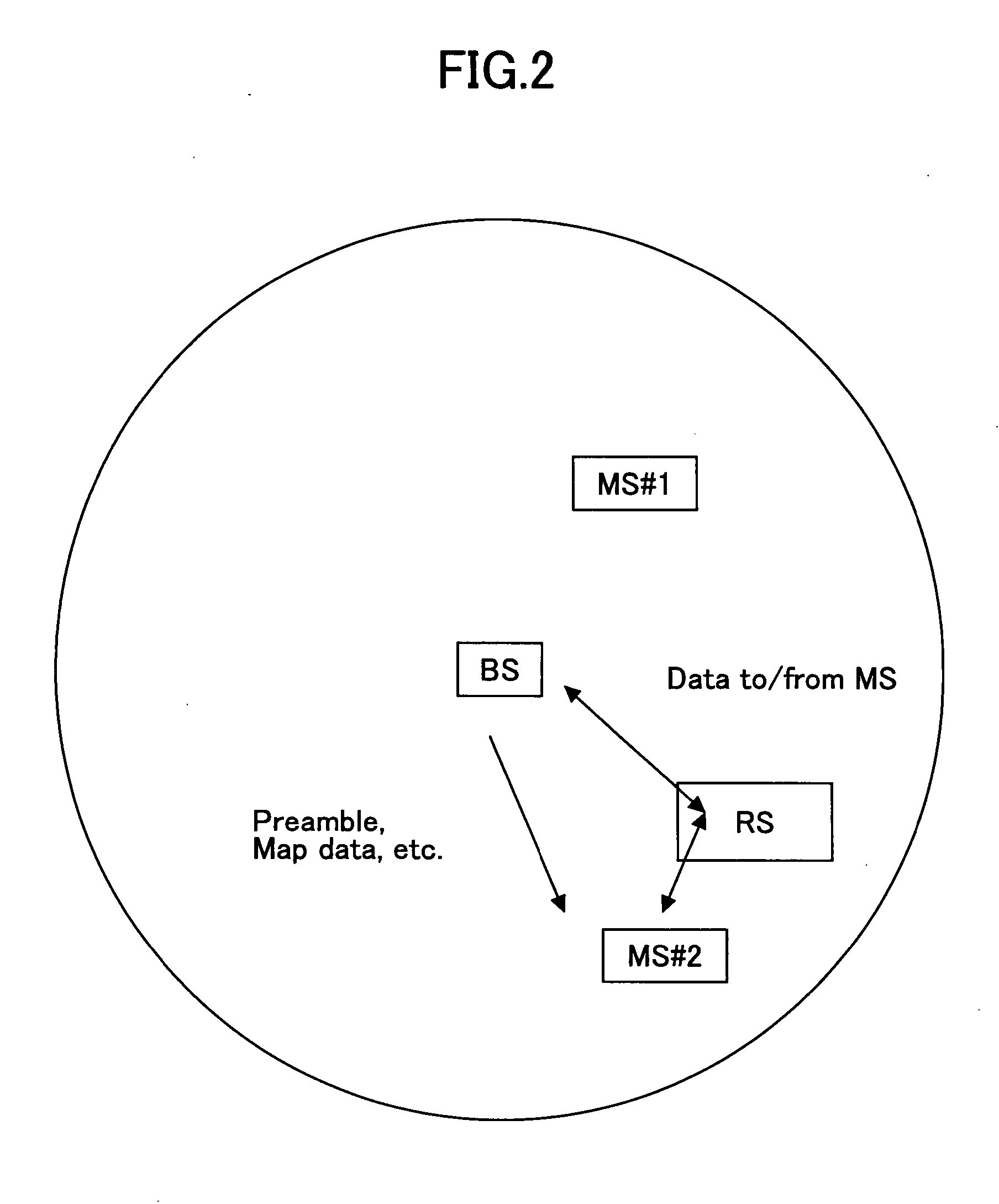Radio base station, relay station, and relay method
- Summary
- Abstract
- Description
- Claims
- Application Information
AI Technical Summary
Benefits of technology
Problems solved by technology
Method used
Image
Examples
first embodiment
[a] Description of First Embodiment
[0057]FIG. 3 is a sequence diagram of a process performed by a radio communication system according to a first embodiment of the present invention. In the first embodiment, a relay station is additionally installed in a radio communication system defined by IEEE 802.16 including a radio base station and a radio terminal performing radio communication with each other. As a matter of course, this process sequence is applicable to any other radio communication system provided with a relay apparatus.
[0058] In FIG. 3, BS (Base Station) indicates a radio base station, which is one of a plurality of radio base stations arranged in a distributed manner in an area providing a radio communication service based on this radio communication system. There are other BSs forming radio areas adjacent to the radio area formed by this BS, although not illustrated herein.
[0059] In this radio communication system, transmission / reception channels (uplink and downlink ...
second embodiment
[b] Description of Second Embodiment
[0108] In the first embodiment, when data is transmitted from a transmitting side apparatus (e.g., BS) via the RS to a receiving side apparatus (e.g., MS), and a resending operation is to be performed, the data is resent once again from the transmitting side apparatus (e.g., BS) via the RS to the receiving side apparatus (e.g., MS).
[0109] In the second embodiment, the RS is used in an effective manner so that radio transmission is performed more efficiently.
[0110] For example, in a case where the RS receives data from the MS (BS) and relays the received data to the BS (MS), and then the BS (MS) makes a resending request, the data can be resent originating from the RS. The data is preferably resent originating from the RS only when the RS can acquire properly received data from the transmitting side, apparatus. If the RS cannot decode properly received data, and the data is resent originating from the RS, it is unlikely that data will be properly...
third embodiment
[c] Description of Third Embodiment
[0202] Next, descriptions are given of downlink data transmission.
[0203]“Downlink data transmission (part 1)”
[0204]FIGS. 15 and 16 are sequence diagrams of downlink data transmission (part 1).
[0205]FIGS. 17 and 18 illustrate operation flows (part 1) of the RS and the BS, respectively.
[0206] In this example, HARQ is employed for controlling the resending operation, and data that is the target of HARQ control is referred to as HARQ data. In a case where ARQ control is employed, the received data does not need to be saved for the purpose of combining data.
[0207] Referring to FIG. 15, the BS acquires, from the packet buffer unit 12, a preamble, MAP data, and data corresponding to a region defined by the MAP data, which are generated by the MAP information generating unit 9, forms a subframe at the PDU generating unit 13, and transmits the subframe from the transmitting unit 16 via the antenna 1.
[0208] The RS and the MS receive the MAP data from th...
PUM
 Login to View More
Login to View More Abstract
Description
Claims
Application Information
 Login to View More
Login to View More - R&D
- Intellectual Property
- Life Sciences
- Materials
- Tech Scout
- Unparalleled Data Quality
- Higher Quality Content
- 60% Fewer Hallucinations
Browse by: Latest US Patents, China's latest patents, Technical Efficacy Thesaurus, Application Domain, Technology Topic, Popular Technical Reports.
© 2025 PatSnap. All rights reserved.Legal|Privacy policy|Modern Slavery Act Transparency Statement|Sitemap|About US| Contact US: help@patsnap.com



